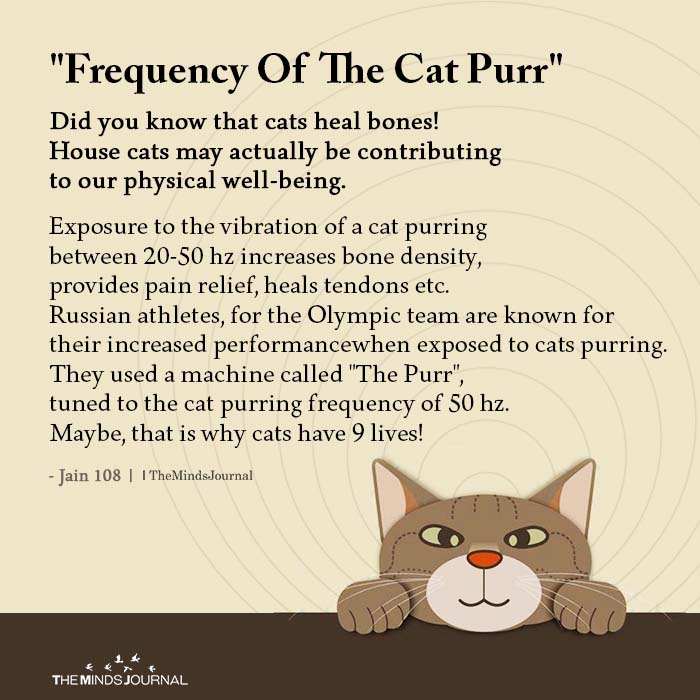Do orange cats make your heart go……Awwwww? There are many people who are particularly attracted to orange or ginger cats, they find them charming. If you are wondering what makes these ginger tabby cats so special, then here are science-based facts about orange cats that you need to know.
Fun Facts About Orange Cats
1. Orange cats are outgoing, friendly, and socialize faster
Orange cats start socializing with people very early on in their lives (ages of 3 and 9 weeks), which has a significant impact on their personality. They like to play a lot with anyone, so their interactions with people are more positive. As a result, they grow up to be more affectionate.
According to the American Association of Feline Practitioners, Kittens don’t develop a fear of humans if they start interacting with people at an early age. If socialization is delayed, these kittens grew up to be shy and timid cats.
2. Orange tabbies are not a breed!
One of the lesser known facts about orange cats. “Tabby” refers to specific coat markings, not breed and regardless of color. The word originated from striped silk fabric made near Baghdad.
3. All orange cats are tabbies, but not all tabbies are orange
Tabby cats have stripes due to the agouti gene. So orange cats can be called tabbies, but not vice-versa.
4. It is hard to find a solid orange feline
One of the disappointing facts about orange cats especially for those looking for a solid orange kitty. Because all tabby cats carry the agouti gene. There are variations in ginger-colored hues, from reddish-orange to yellowish-cream, which is predominantly due to the pigment known as pheomelanin (it is also known for producing red hair in humans).
5. Only certain cat breeds have orange tabby color
Ginger fur or orange tabby color is commonly found in –
- Persian
- British Shorthair
- Egyptian Mau
- Abyssinian
- American Bobtail
- Bengal
- Maine Coon and
- Munchkin cats
6. Orange tabby cats are popular on silver screens
Besides the American comic strip Garfield, ginger cats have got a lot of screen time. Jonesy from Alien, Crookshanks from Harry Potter, Goose from Captain Marvel, Orion from Men in Black, Orangey from Breakfast at Tiffany’s, and many more TV shows and movies have featured orange cats. I am sure all the ginger tabby owners are feeling proud reading these facts about ginger cats.
7. Orange tabby cats are foodies
This is one of the surprising facts about orange cats. They love to eat a lot and this is what we all saw in Garfield. No wonder why obesity and other health risks like feline diabetes are high for these cats.
8. Ginger tabbies have laid-back “cattitude”
Besides their friendly nature, orange cats breed are known for laziness. They are lazier when compared to other breeds. They love to eat and sit around. However, their “cattitude” makes them adorable.
9. Personality of orange cats is unique
One of the least-known facts about orange cats! If you are planning to bring home an orange tabby this Christmas, then you will be glad to know about the unique orange cats personality.
Besides, being adorable in orange fur and super friendly nature, these cats may throw tantrums seeing a stranger as if there is a big threat to them. They are good at being super affectionate as well as aloof. They seem to be playful but can be reserved. Adding to that, they may be aggressive with your dogs or other pets in your home. You can say there are fifty shades of an orange cat’s personality. Be ready for risks, if you really want this cute and cuddly breed in your space
10. Ginger cats have their own holiday
In U.S. Ginger Cat Appreciation Day is celebrated on September 1 each year.
Frequently Asked Questions About Orange Cats
1. Why are orange cats friendly?
This is one of the interesting facts about orange cats. Scientists at the University of California, Berkeley surveyed 189 cat owners in a study published in the October 2012 edition of Anthrozoos. As per results from this and the follow-up survey –
- More people rated orange cats as the friendliest and some rated them as aggressive
- While white cats were rated as aloof
- Tortoiseshell cats were thought to have too much “attitude”
Flame-colored kittens are naturally adorable and people find them charming. Unlike other shy cats, these orange cats appear more comfortable in approaching humans. So, a lot of people find them friendlier and affectionate.
That said there is no large concrete evidence that proves orange cats are friendlier than cats of other colors. Yet these orange ones have earned a reputation for being attention-seeking, cuddly, and clingy. Some critics of the above survey highlighted confirmation bias because orange cat owners will naturally support the breed they own and their own stereotypes.
However, genetics also play a great role in making orange cats friendly. Research shows that male cats are slightly friendlier than female cats. And orange cats are mostly males – that also partially explains the loving nature of orange cats.
2. Are all orange cats male?
The gene responsible for the orange color of cats is sex-linked and it is mainly the X chromosome. We all know that females carry two X chromosomes and males have one X and one Y chromosome. Clearly, male cats are highly likely to carry on the trait as they only need the orange gene from their mothers to become ginger, while females need two copies of the gene.
Although the exact reason is not known, there is a strong genetic link between sex and the coat color, which is why male orange tabby cats outnumber females. In conclusion, most but not all orange cats are male. Can orange cats be female? Yes, but rare. It is because only one in five orange cats is female.
3. Why do orange tabby cats have an ‘M’ mark on their forehead?
As per literature on orange cats, they are available in four different patterns that are classic, ticked, mackerel and spotted. Mackerel is a tripped pattern, which gives orange kitties a tiger-like look, with an “M” shape on the forehead for ages. Scientists say it is the outcome of their DNA that determines the coat pattern.
In some countries, people believe that an orange cat curled up with baby Jesus (who was lying in the manger shivering due to cold). The cat purred, which worked like a lullaby and helped Jesus fall asleep. Then, Mother Mary blessed the cat by marking her own initial on the tabby’s forehead, so that it forever reminds the feline world that one of their kind had taken care of the newborn Jesus.
But, in the Islamic world, the M mark on orange tabbies refers to Mohammed, who was saved by his tabby cat named Muezza from a poisonous snake.
In short, ginger tabby cats come with a historical reference. And that’s a good reason to welcome one into your sweet home.
Related: Can Pets Cure Us Of Our Illnesses?
Related: How Cats Protect You and Your House From Negative Spirits
Why orange cats are special?
They differ from cats of other colors in various ways according to French scientists, led by biologist Dominique Pontie. They conducted a study examining the frequency of the orange gene variant among cat populations. Researchers analyzed 30 cat populations in France and collected data from 56 to 491 cats from each population. The results were intriguing and here are three trends they observed regarding this particular cat population.
1. They are not readily available
Unlike urban areas, rural areas have more orange cats because the social conditions in the rural environments favor polygynous mating. In an urban environment, both female and male cats have multiple mates. But, in a rural environment, male cats can mate with multiple female cats, but females tend to mate with only one mate.
It seems that orange male cats have higher social status, therefore, they enjoy greater reproductive success in rural areas.
Read: The Science Of Love: Lust, Attraction, Attachment & Brain Chemistry
2. They are more likely to engage in risky behavior
Engaging in risky behavior results in death, so orange cats are less common in areas with greater mortality risk.
In urban areas, orange male cats may not enjoy high social status. In dense environments, female cats get the opportunity to mate with many male cats.
More than the physical competition, male cats depend on sperm competition for reproductive success. Hence, orange male cats that are – highly competitive, dominant and aggressive – enter into fights with other cats or other risky behavior, which increases their risk of death. Hence, the proportions of these cats are less in cities. This also explains why are orange cats so crazy.
Related: 9 Reasons Why Introverts Make Great Leaders, According To Science
3. They show greater sexual dimorphism
Orange male cats weigh more than the non-orange males and orange female cats weigh less than non-orange females. This pattern has been documented in the Australian Journal of Zoology.
Considering these results, the researchers came up with a theory that due to physical and behavioral differences, orange cats, particularly male cats, depend on different reproductive strategies. Not just because they are larger in size but are probably more aggressive according to a study that showed a relationship between a male cat’s body size and aggression towards other cats.
Such strange color-based behavioral associations. Isn’t it? It can be concluded that the bold personality and dominant nature along with unique characteristics make the orange cats friendly, affectionate and special.

Did you enjoy reading facts about orange cats? Leave a comment below.
References
- Journal of Applied Animal Welfare Science: The Relationship Between Coat Color and Aggressive Behaviors in the Domestic Cat, 10/14/15 http://www.tandfonline.com/doi/abs/10.1080/10888705.2015.1081820?journalCode=haaw20#abstract
- Tech Times: Cat Color May Hint How Aggressive It Is: Felines with Black, White or Gray Fur Make Best Pets, 10/26/15 https://www.techtimes.com/articles/99474/20151026/cat-color-may-hint-how-aggressive-it-is-felines-with-black-white-or-gray-fur-make-best-pet.htm
- Berkeley News: Don’t be so fast to judge a cat by its color, study warns, 10/13/12
http://news.berkeley.edu/2012/10/23/cat-color/ - American Association of Feline Practitioners: Feline Behavior Guidelines, 2004 https://catvets.com/public/PDFs/PracticeGuidelines/FelineBehaviorGLS.pdf
- Cornell University College of Veterinary Medicine: Ask Elizabeth
http://www.vet.cornell.edu/fhc/Health_Information/deaf.cfm - Manual of Clinical Behavioral Medicine for Dogs and Cats
https://books.google.com/books?id=HHoK9PKpqn4C&pg=PA319&lpg=PA319&dq=how+lack+of+nutrition+as+a+kitten+shapes+be











Leave a Reply